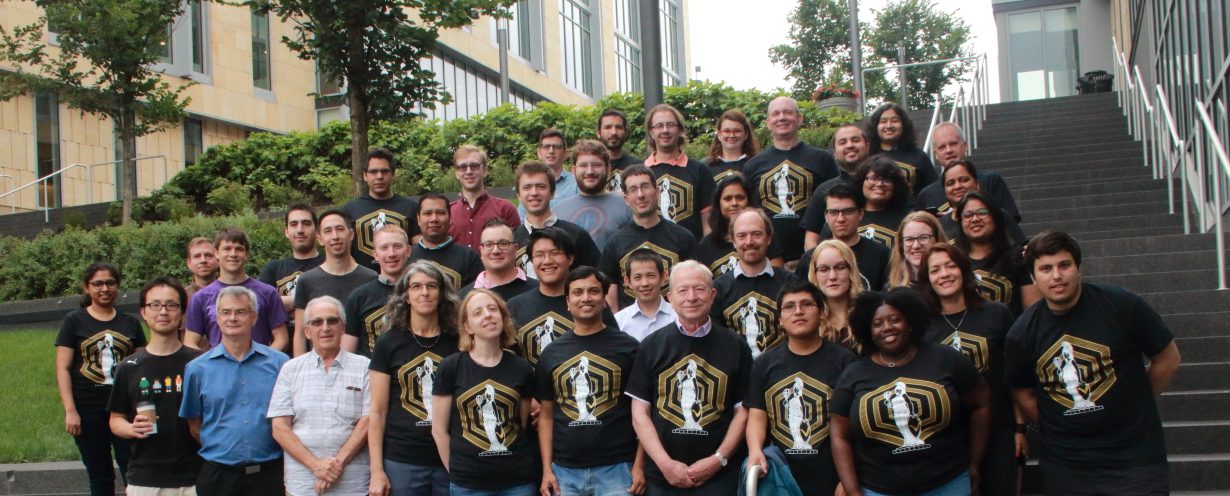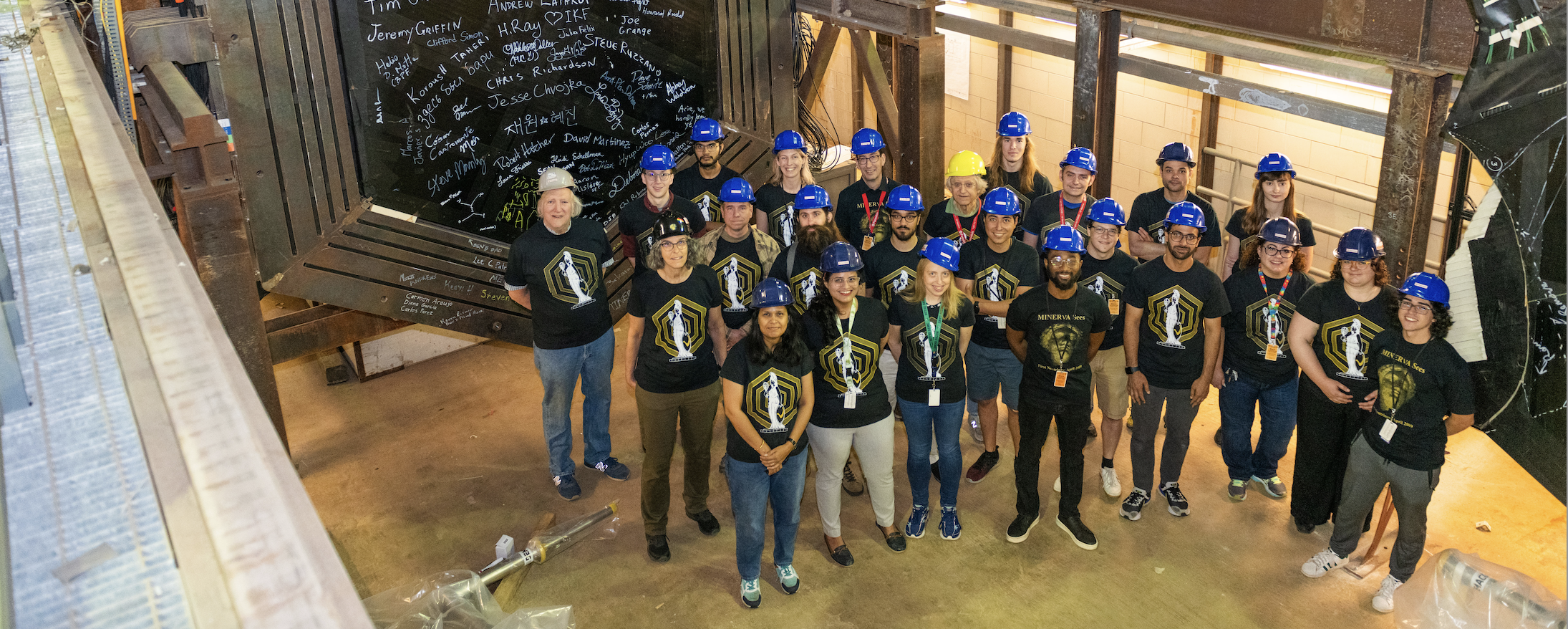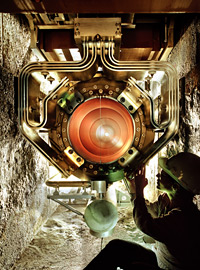
MINERvA uses a collider detector design and a high-intensity beam to study neutrino reactions with five different nuclei, creating the first self-contained comparison of interactions in different elements.
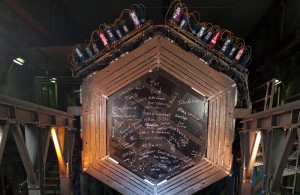
MINERvA’s comprehensive research goals attract scientists from around the globe who specialize in nuclear and particle physics. (Credit: Fermilab)
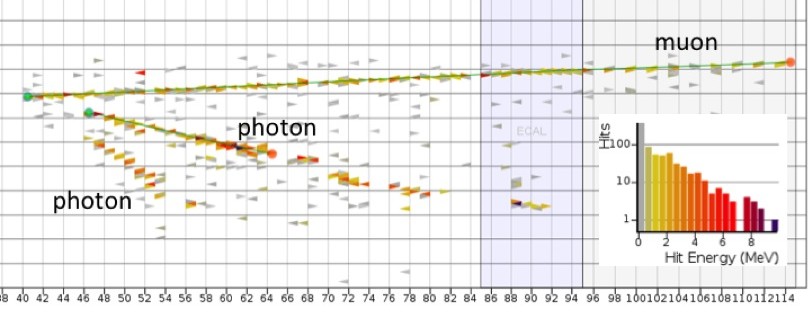
Seeing, measuring, and understanding the details of neutrino-nucleus interactions are the goal of MINERvA. In this simulated event, a neutrino enters (not visible) from the left, interacts in the detector, and produces a muon (going out to the right) and an invisible neutral pion that eventually produces the two photosn that make “tracks” pointing back to the muon’s starting position. (Credit: Fermilab)
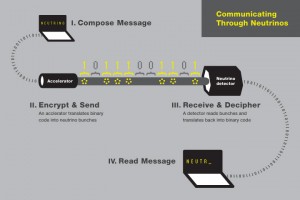
MINERvA provides the first test of neutrino communication by receiving and deciphering a coded message that spells out the word neutrino. A neutrino beam is programmed to send out timed pulses toward the detector with each pulse consisting of a bunch of neutrinos registering in the detector and being recorded by researchers as a 1. Pulses without neutrinos do not register in the detector and are recorded as a 0. The binary-code like combination of five bunches represents a letter, for example 01110 equals n. (Credit: Sandbox Studio)
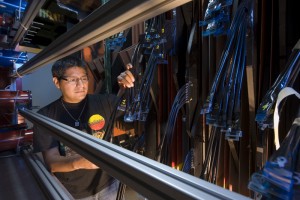
The particle detection portions of MINERvA’s inner and outer detectors are composed of extruded plastic scintillator strips that collect and measure the light generated by particle interactions in the plastic. There is a wavelength-shifting fiber embedded in the center of each strip, and they are painted on the outside with a white reflective coating. (Credit: Fermilab)
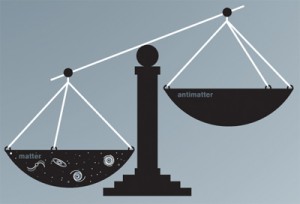
The Big Bang produced equal amounts of matter and antimatter. When matter and antimatter annihilated, some tiny asymmetry in the early universe allowed matter to dominate antimatter, producing our universe. Were neutrinos involved in producing the asymmetry? (Credit: symmetry magazine)

About 100 trillion neutrinos pass through you body every second without interacting with the other particles in your body. You never notice they are there. It is exactly this ghostly presence of neutrinos and their surprisingly important role in the universe that intrigues physicists. (Credit: symmetry magazine)
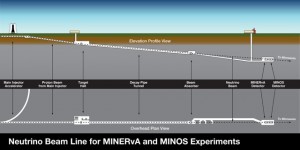
The Neutrino at Main Injector, or NuMI, at Fermilab produces a beam of protons that strikes an underground carbon target and produces large numbers of pions and kaons among other particles. Using a magnetic focusing horn, the pions and kaons are directed toward the MINERvA detector, located a little more than half a mile away. The pions and kaons decay in flight to produce neutrinos and muons. The muons are absorbed in the 787 feet of rock between the NuMI target and the MINERvA detector, while the neutrinos pass through the rock to enter our detector. This same neutrino beam also passes through the MINOS near detector, and travels through 455 miles of Earth to reach the MINOS far detector, located in the Soudan Mine in Minnesota. (Credit: Fermilab)




